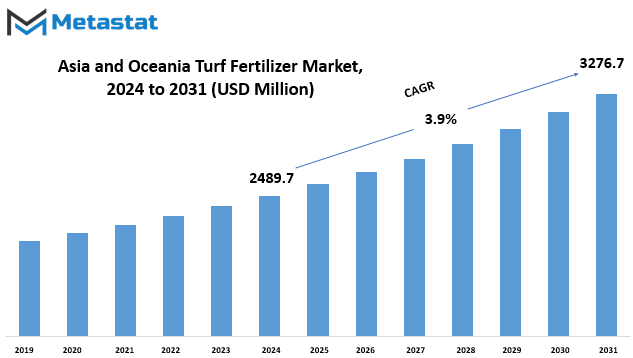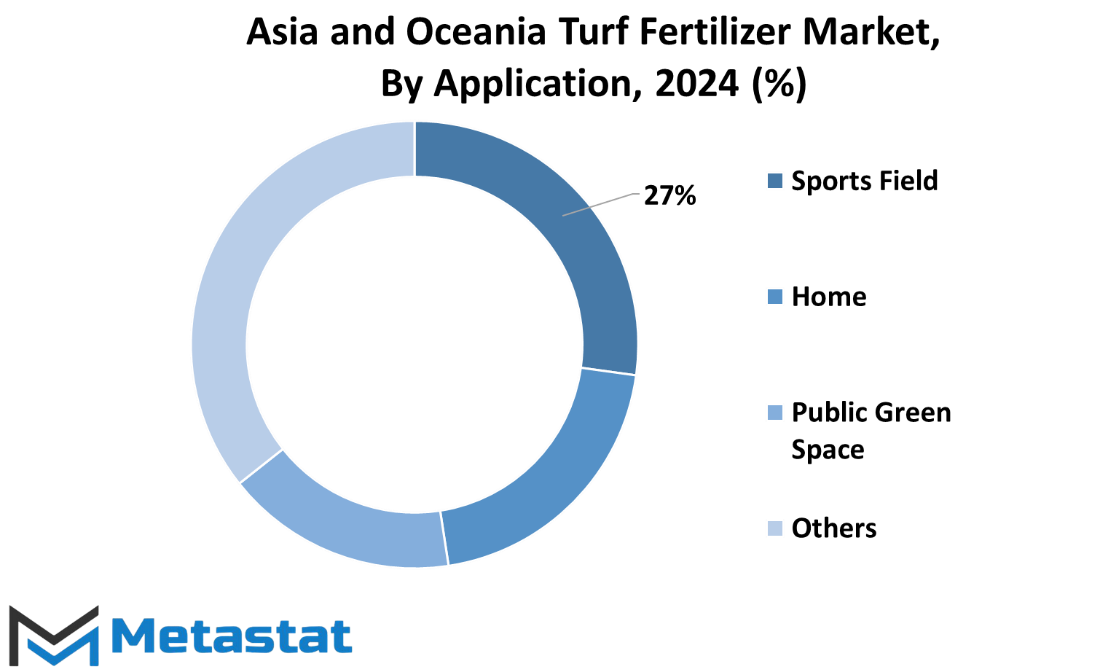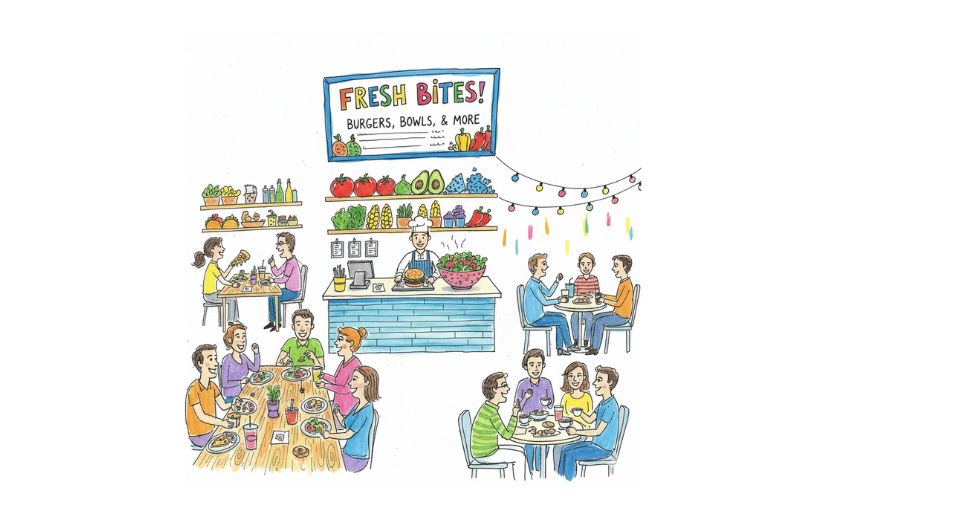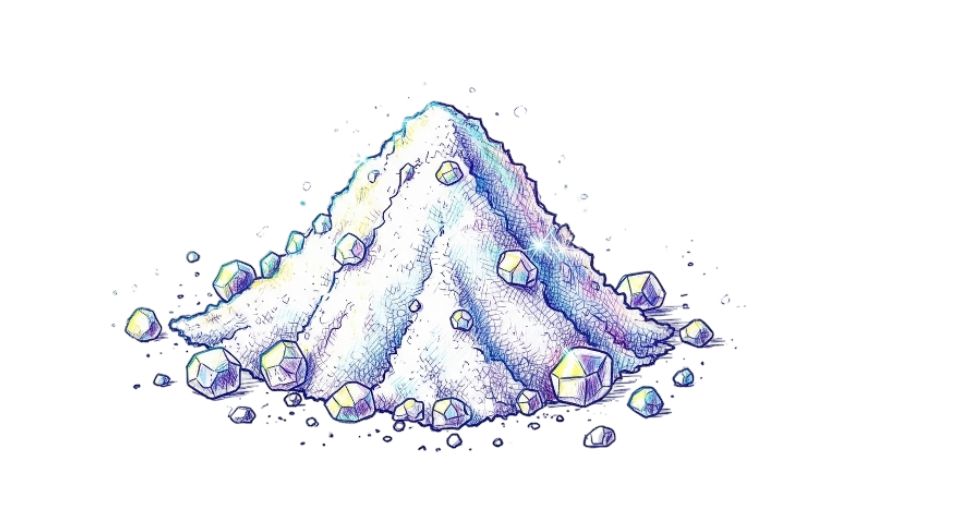MARKET OVERVIEW
The Asia and Oceania Turf Fertilizer market stands as a vibrant testament to the agricultural dynamism within the region. Spanning the expansive landscapes of Asia and the picturesque islands of Oceania, this market encapsulates the essence of agricultural sustainability and the pursuit of lush greenery in both residential and commercial spaces.
This unique market is characterized by its diversity, mirroring the rich tapestry of cultures, climates, and agricultural practices across the region. From the terraced rice fields of Southeast Asia to the sprawling golf courses of Australia, turf fertilizers play a pivotal role in fostering the growth and maintenance of vibrant, healthy lawns and turfs. The demand for turf fertilizers in this region is driven by a collective desire for aesthetically pleasing landscapes, be it for recreational spaces, sports fields, or private residences.
In recent years, the Asia and Oceania Turf Fertilizer market has witnessed a surge in innovation, with manufacturers focusing on developing formulations that cater to the specific soil conditions and climate variations prevalent in the region. The need for adaptability is apparent as the market caters to diverse terrains, ranging from the arid landscapes of the Australian Outback to the tropical rainforests of Southeast Asia. This adaptability factor has become a hallmark of the turf fertilizer industry in this region.
A key driving force behind the demand for turf fertilizers is the increasing urbanization and the proliferation of green spaces within cities. As urban landscapes expand, there is a growing emphasis on incorporating greenery into architectural designs and city planning. Public parks, recreational areas, and even rooftop gardens are becoming integral parts of modern cityscapes, creating a sustained demand for high-quality turf fertilizers.
The agricultural practices in Oceania, particularly in Australia and New Zealand, also contribute significantly to the demand for turf fertilizers. The continent's vast agricultural expanses, coupled with a strong sports culture, necessitate the use of turf fertilizers for maintaining sports fields and ensuring the lushness of playing surfaces. Additionally, the meticulous care given to golf courses in Australia adds to the demand for specialized turf fertilizers designed for golf turf management.
In the intricate web of the Asia and Oceania Turf Fertilizer market, the role of sustainable practices cannot be overlooked. With an increasing awareness of environmental impact, manufacturers are investing in research and development to create fertilizers that promote soil health, reduce water consumption, and minimize the use of harmful chemicals. This shift towards eco-friendly formulations aligns with the global movement towards sustainable agriculture and resonates with the environmentally conscious consumers in the region.
The Asia and Oceania Turf Fertilizer market is a thriving sector that encapsulates the diverse landscapes and agricultural practices of the region. From urban green spaces to vast agricultural expanses, turf fertilizers play a vital role in nurturing vibrant and healthy turfs. The industry's adaptability, coupled with a growing emphasis on sustainability, positions it as a crucial player in the ever-evolving agricultural landscape of Asia and Oceania.
Asia and Oceania Turf Fertilizer market is estimated to reach $3276.7 Million by 2031; growing at a CAGR of 3.9% from 2024 to 2031.

GROWTH FACTORS
In the vast landscape of the Asia and Oceania Turf Fertilizer Market, several factors shape its dynamics. One notable aspect is the escalating demand for landscaping services. As more individuals and businesses recognize the importance of aesthetically pleasing outdoor spaces, the need for turf fertilizers has witnessed a corresponding surge.
Simultaneously, the growth in the sports and golf industries contributes significantly to the evolving scenario of this market. The meticulous care and maintenance required for sports fields and golf courses drive the demand for specialized turf fertilizers tailored to enhance the health and appearance of these specific landscapes.
However, amid the opportunities lie certain challenges. Environmental concerns cast a shadow on the unfettered growth of the turf fertilizer market. As awareness regarding ecological impact intensifies, stakeholders in this industry face the imperative task of developing environmentally sustainable products and practices.
Another impediment is the high cost associated with specialized turf fertilizers. The intricacies involved in formulating products tailored for specific needs often translate into elevated prices. This poses a constraint for both consumers and businesses aiming to maintain lush, healthy turf while adhering to budgetary considerations.
Nevertheless, within the challenges lie opportunities. The burgeoning interest in organic and eco-friendly products presents a promising avenue for the turf fertilizer market. Consumers increasingly seek alternatives that align with environmentally conscious practices, opening new prospects for manufacturers to innovate and capitalize on this shift in preference.
The Asia and Oceania Turf Fertilizer Market reflects a dynamic interplay of demand and challenges. The rising need for landscaping services and the symbiotic relationship with the sports and golf industries propel growth. However, environmental concerns and the high cost of specialized products pose hurdles, while the rising interest in organic options provides a ray of opportunity for sustainable and eco-friendly solutions in the turf fertilizer domain.
MARKET SEGMENTATION
By Type
In the vast expanse of the Asia and Oceania turf fertilizer market, the categorization by type adds nuance to the landscape. This segmentation unravels the diverse options available to consumers seeking the right nourishment for their lawns. There’s the option of Slow-release Natural Lawn Feed, a fertilizer designed to provide a gradual release of nutrients. This ensures a sustained and steady nourishment for the turf, promoting long-term health and vitality. This choice appeals to those who prefer a more measured and enduring approach to lawn care.
On the other hand, Controlled-release Natural Lawn Feed presents an alternative strategy. This type of fertilizer is formulated to release nutrients at a controlled rate, offering a balanced and consistent feeding schedule for the turf. It caters to individuals who value precision in nutrient delivery, maintaining a stable and well-regulated environment for their lawns.
In turf fertilizers, the category labeled as others introduces a spectrum of additional options. This broad classification encompasses various formulations and blends, providing a flexible array of choices to cater to diverse preferences and specific lawn care needs. The Others category acts as a catch-all, accommodating innovations and alternative approaches to turf nourishment. The segmentation of the Asia and Oceania turf fertilizer market by type sheds light on the varied preferences and priorities of consumers. Whether opting for the gradual release of Slow-release Natural Lawn Feed, the controlled approach of Controlled-release Natural Lawn Feed or exploring the diverse offerings within the ‘Others’ category, individuals can tailor their choices to align with the specific needs of their lawns, fostering a lush and healthy turf.
By Application
The Asia and Oceania Turf Fertilizer Market is categorized based on its application, with segments including Sports Field, Home, Public Green Space, and Others. This division enables a comprehensive understanding of how turf fertilizers are utilized in various settings.
In examining the market, we find that turf fertilizers play a crucial role in maintaining the quality and health of grassy areas. Sports fields, serving as arenas for athletic activities, benefit from these fertilizers to ensure a lush and resilient playing surface. The application extends beyond the professional space to our homes, where individuals seek vibrant and well-nourished lawns.
Public green spaces, such as parks and communal areas, are also integral to this market. Turf fertilizers contribute to the overall aesthetics and health of these spaces, creating environments that are visually appealing and conducive to community gatherings. The Others category encompasses diverse applications, highlighting the versatility of turf fertilizers across various contexts.
By delving into the segmentation based on application, we gain insights into the diverse needs and preferences driving the demand for turf fertilizers in Asia and Oceania. It's evident that these products play A pivotal role in enhancing and maintaining the green landscapes we encounter in our everyday lives, from sports fields to our own backyards and communal spaces.

REGIONAL ANALYSIS
The market for turf fertilizer in Asia and Oceania is divided into distinct regions, namely India, China, Japan, South Korea, and the Rest of Asia-Pacific. Each of these areas plays a significant role in shaping the dynamics of the turf fertilizer industry in this vast region. Understanding the specific nuances of the market in these countries is crucial for stakeholders aiming to navigate and capitalize on the diverse opportunities presented.
India, with its vast agricultural landscape and growing demand for quality turf, stands as a pivotal player in the turf fertilizer market. The unique challenges and preferences of the Indian market influence the type and composition of fertilizers required. China, another major segment, boasts a rapidly expanding urban green space sector, driving the need for efficient turf management solutions. Navigating the market intricacies in China requires a nuanced approach, considering factors like environmental regulations and preferences.
Japan, with its advanced technological landscape, showcases a demand for innovative turf care products. The discerning consumer base in Japan seeks high-performance fertilizers, pushing manufacturers to adapt and innovate. Meanwhile, South Korea, with its emphasis on aesthetics and urban landscaping, forms a distinctive segment with preferences for visually appealing turf solutions.
The Rest of Asia-Pacific represents a diverse collection of countries, each with its unique agricultural and environmental conditions. Understanding and addressing the specific needs of these nations is essential for businesses looking to establish a foothold in this varied market landscape. In this dynamic scenario, market participants must tailor their strategies to suit the local demands and regulations, creating a mosaic of opportunities across Asia and Oceania for the turf fertilizer industry.
COMPETITIVE PLAYERS
In the Turf Fertilizer industry in Asia and Oceania, several prominent players contribute significantly to its growth and development. Key companies shaping this sector include ICL Group, Yara International, Zhengzhou Gaofu Fertilizer Co Ltd., Wuhan Lvyin Chemical Co., Ltd., Sustane Natural Fertilizer, Inc., Plant Food Company, Inc., JCAM AGRI. Co., Ltd., Haifa Group, Daeyu Co. Ltd., Daeji Development Co., Ltd., Australand Agriculture, Coromandel International Limited, Indian Farmers Fertiliser Cooperative Limited (IFFCO), National Fertilizers Limited, Rashtriya Chemicals & Fertilizers Ltd (RCF), Tata Chemicals Limited, Wengfu Australia, Baileys Fertiliser, Mangalore Chemicals & Fertilizers Limited, RISSO-Chemical, Paradeep Phosphates Limited, Nousbo Co., Ltd., COMPO EXPERT GmbH, J.R. Simplot Company, Knox Fertilizer Company, Inc, Harrell’s LLC, and Saviola Group.
These industry giants play a pivotal role in influencing market dynamics and contributing to the overall competitiveness of the Turf Fertilizer sector. The diversity in players reflects the broad spectrum of expertise and resources involved in meeting the demand for turf fertilizers in the region.
ICL Group, a notable player in this field, stands out for its commitment to innovation and quality. Yara International, another key contributor, brings a wealth of experience and global reach to the table. The market also witnesses the active participation of domestic companies such as Wuhan Lvyin Chemical Co., Ltd., showcasing the regional diversity in the turf fertilizer landscape.
The market is not only characterized by well-established names like Tata Chemicals Limited but also sees the active involvement of emerging players like Nousbo Co., Ltd. This diversity fosters healthy competition and innovation within the industry, creating a landscape where established players and new entrants coexist and contribute to the overall growth of the Turf Fertilizer market in Asia and Oceania.
The Turf Fertilizer industry in Asia and Oceania is shaped by a diverse array of influential players, each bringing its unique strengths and capabilities to the forefront. The collaborative efforts of these companies contribute to the vibrancy and competitiveness of the market, ultimately driving advancements in turf fertilizer solutions for the benefit of agricultural practices in the region.
Turf Fertilizer Market Key Segments:
By Type
- Slow-release Natural Lawn Feed
- Controlled-release Natural Lawn Feed
- Others
By Application
- Sports Field
- Home
- Public Green Space
- Others
Key Asia and Oceania Turf Fertilizer Industry Players
- ICL Group
- Yara International
- Zhengzhou Gaofu Fertilizer Co Ltd.
- Wuhan Lvyin Chemical Co., Ltd.
- Sustane Natural Fertilizer, Inc.
- Plant Food Company, Inc.
- JCAM AGRI. Co., Ltd.
- Haifa Group
- Daeyu Co. Ltd.
- Daeji Development Co., Ltd.
- Australand Agriculture
- Coromandel International Limited
- Indian Farmers Fertiliser Cooperative Limited (IFFCO)
- National Fertilizers Limited
- Rashtriya Chemicals & Fertilizers Ltd (RCF)
WHAT REPORT PROVIDES
- Full in-depth analysis of the parent Industry
- Important changes in market and its dynamics
- Segmentation details of the market
- Former, on-going, and projected market analysis in terms of volume and value
- Assessment of niche industry developments
- Market share analysis
- Key strategies of major players
- Emerging segments and regional growth potential








 US: +1 3023308252
US: +1 3023308252






